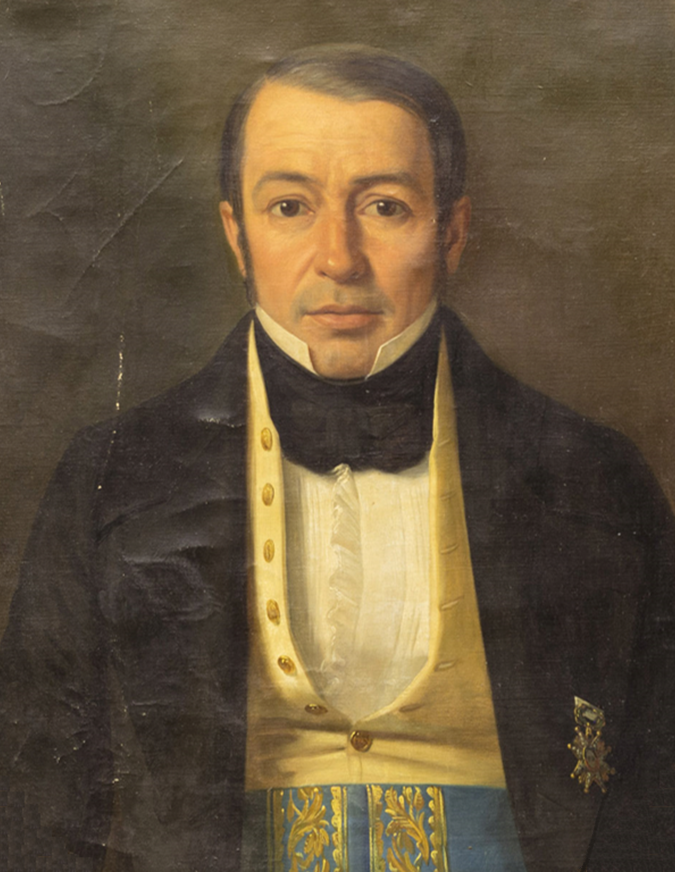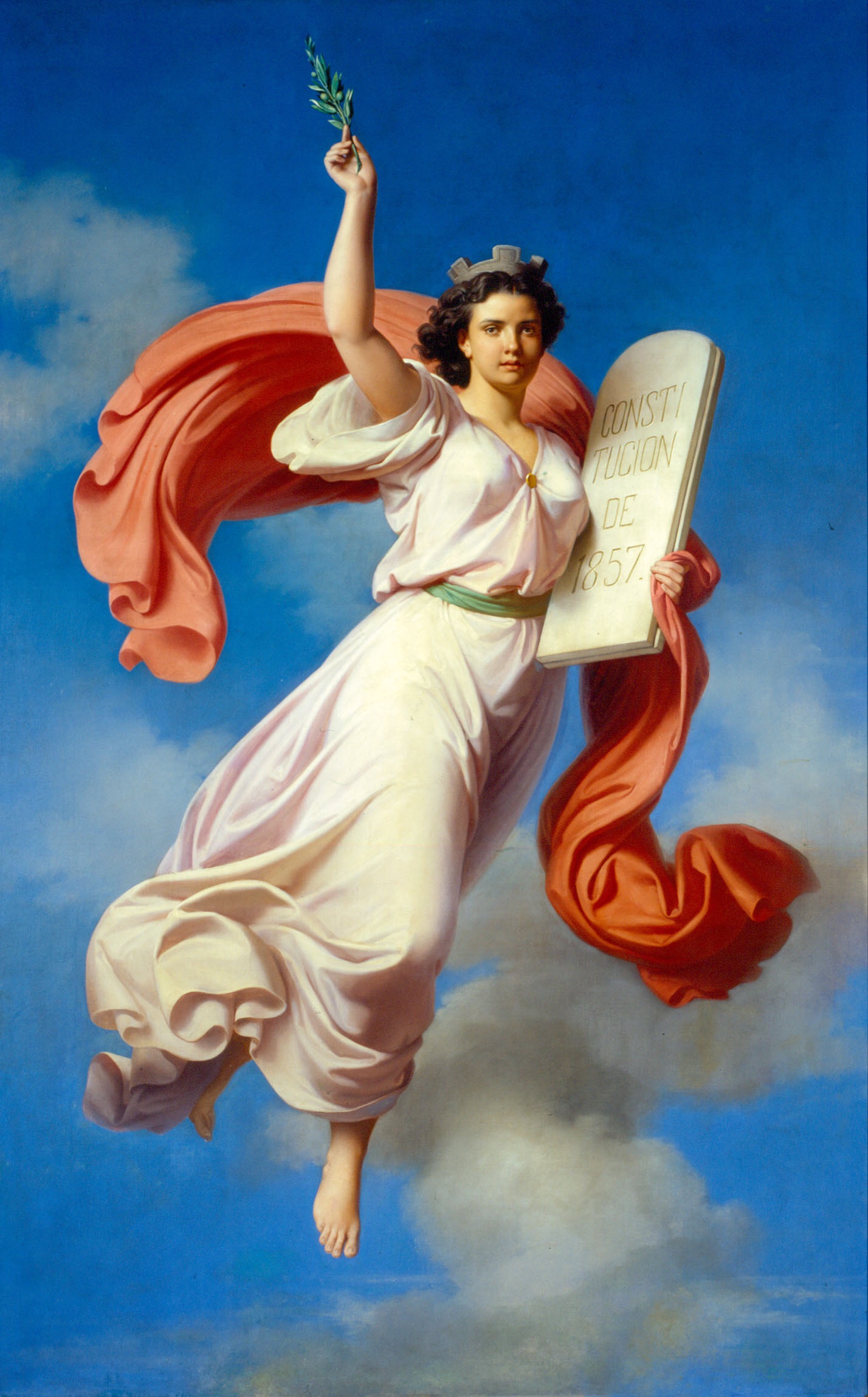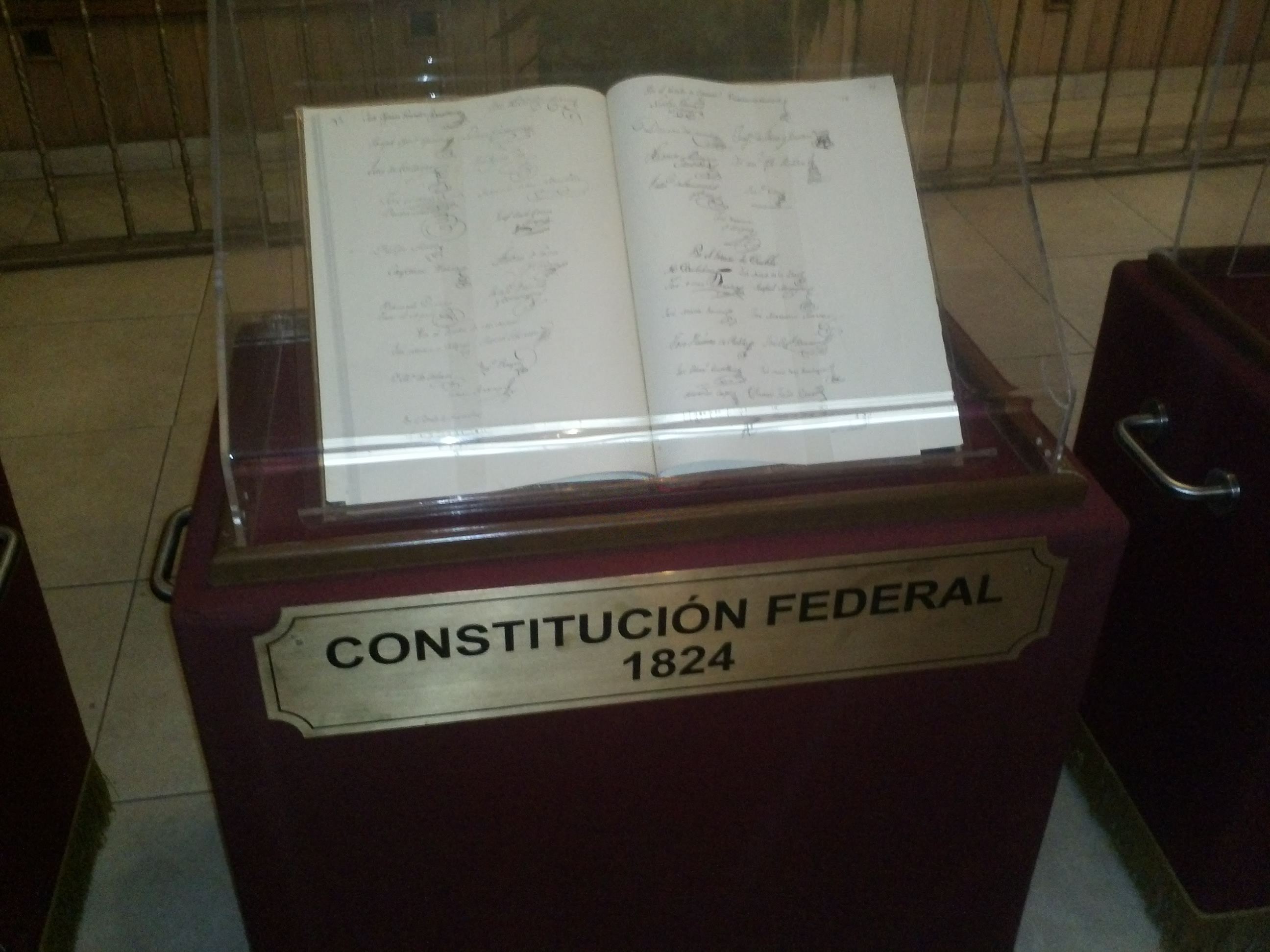|
Conservative Party (Mexico)
The Conservative Party ( es, Partido Conservador) was one of two major factions in Mexican political thought that emerged in the years after independence, the other being the Liberals. At various times and under different circumstances they were known as '' escoceses'', ''centralists'', ''royalists'', ''imperialists'', or ''conservatives'', but they tended to be united by the theme of preserving colonial Spanish values, while not being opposed to the economic development and modernization of the nation. Their base of support was the army, the , and the Catholic Church. While containing a noted monarchist element which ended up resulting in multiple efforts to establish a monarchy in Mexico, the conservatives were not always averse to the republican form of government, but they supported the movement to have a centralized republic as opposed to a federal republic. With the fall of the Second Mexican Empire the conservatives suffered a decisive defeat, and the party ceased to e ... [...More Info...] [...Related Items...] OR: [Wikipedia] [Google] [Baidu] |
Centralist Republic Of Mexico
The Centralist Republic of Mexico ( es, República Centralista de México), or in the anglophone scholarship, the Central Republic, officially the Mexican Republic ( es, República Mexicana), was a unitary political regime established in Mexico on October 23, 1835, under a new constitution known as the Seven Laws after conservatives repealed the federalist Constitution of 1824 and ended the First Mexican Republic. It would ultimately last until 1846 when the Constitution of 1824 was restored at the beginning of the Mexican American War. Two presidents would predominate throughout this era: Santa Anna, and Anastasio Bustamante. Mexican conservatives attributed the political chaos of the federal era to the empowerment of states over the federal government, the participation of non-elite men in the political system through universal male suffrage, rebellions, and economic stagnation to the weakness of the federal government. Conservative elites saw the solution to the problem as ... [...More Info...] [...Related Items...] OR: [Wikipedia] [Google] [Baidu] |
Lucas Alamán
Lucas Ignacio Alamán y Escalada ( Guanajuato, New Spain, October 18, 1792 – Mexico City, Mexico, June 2, 1853) was a Mexican scientist, conservative statesman, historian, and writer. He came from an elite Guanajuato family and was well-traveled and highly educated. He was an eyewitness to the early fighting in the Mexican War of Independence when he witnessed the troops of insurgent leader Miguel Hidalgo y Costilla sack Guanajuato City an incident that informed his already conservative and antidemocratic thought He has been called the "arch-reactionary of the epoch...who sought to create a strong central government based on a close alliance of the army, the Catholic Church and the landed classes." He has been compared to Metternich, and was one of the prime voices advocating for the establishment of a monarchy in Mexico. According to historian Charles A. Hale, Alamán was "undoubtedly the major political and intellectual figure of independent Mexico until his death ... [...More Info...] [...Related Items...] OR: [Wikipedia] [Google] [Baidu] |
Republicanism
Republicanism is a political ideology centered on citizenship in a state organized as a republic. Historically, it emphasises the idea of self-rule and ranges from the rule of a representative minority or oligarchy to popular sovereignty. It has had different definitions and interpretations which vary significantly based on historical context and methodological approach. Republicanism may also refer to the non-ideological scientific approach to politics and governance. As the republican thinker and second president of the United States John Adams stated in the introduction to his famous '' A Defense of the Constitutions of Government of the United States of America,'' the "science of politics is the science of social happiness" and a republic is the form of government arrived at when the science of politics is appropriately applied to the creation of a rationally designed government. Rather than being ideological, this approach focuses on applying a scientific methodology to ... [...More Info...] [...Related Items...] OR: [Wikipedia] [Google] [Baidu] |
Constitution Of 1857
The Federal Constitution of the United Mexican States of 1857 ( es, Constitución Federal de los Estados Unidos Mexicanos de 1857), often called simply the Constitution of 1857, was the liberal constitution promulgated in 1857 by Constituent Congress of Mexico during the presidency of Ignacio Comonfort. Ratified on February 5, 1857, the constitution established individual rights, including universal male suffrage, and others such as freedom of speech, freedom of conscience, freedom of the press, freedom of assembly, and the right to bear arms. It also reaffirmed the abolition of slavery, debtors' prisons, and all forms of cruel and unusual punishment such as the death penalty. The constitution was designed to guarantee a limited central government by federalism and created a strong national congress, an independent judiciary, and a small executive to prevent a dictatorship. Liberal ideals meant the constitution emphasized private property of individuals and sought to abolish common ... [...More Info...] [...Related Items...] OR: [Wikipedia] [Google] [Baidu] |
La Reforma
''La Reforma'' ( en, The Reform), refers to a pivotal set of laws, including a new constitution, that were enacted in Mexico during the 1850s after the Plan of Ayutla overthrew the dictatorship of Santa Anna. They were intended as modernizing measures: social, political, and economic, aimed at undermining the traditional power of the Catholic Church and the army. The reforms sought separation of church and state, equality before the law, and economic development. The Juárez Law reduced the power that military and ecclesiastical courts held. The Lerdo Law forced land held in collective ownership to be sold to individual owners. It aimed at creating a dynamic real estate market, creating a class of yeoman farmers owning their own land, and raising revenue for the state. The measure was intended to strip the Church of most of its property, as well as to break indigenous communities' collective ownership of land. Both of these laws were later integrated into the Constitution of 185 ... [...More Info...] [...Related Items...] OR: [Wikipedia] [Google] [Baidu] |
Mexican–American War
The Mexican–American War, also known in the United States as the Mexican War and in Mexico as the (''United States intervention in Mexico''), was an armed conflict between the United States and Mexico from 1846 to 1848. It followed the 1845 American annexation of Texas, which Mexico still considered its territory. Mexico refused to recognize the Velasco treaty, because it was signed by President Antonio López de Santa Anna while he was captured by the Texan Army during the 1836 Texas Revolution. The Republic of Texas was ''de facto'' an independent country, but most of its Anglo-American citizens wanted to be annexed by the United States. Sectional politics over slavery in the United States were preventing annexation because Texas would have been admitted as a slave state, upsetting the balance of power between Northern free states and Southern slave states. In the 1844 United States presidential election, Democrat James K. Polk was elected on a platform of expand ... [...More Info...] [...Related Items...] OR: [Wikipedia] [Google] [Baidu] |
First Mexican Republic
The First Mexican Republic, known also as the First Federal Republic ( es, Primera República Federal, link=no), was a Federal republic, federated republic, under the Constitution of 1824. It was a nation-state officially designated the United Mexican States ( es, Estados Unidos Mexicanos, link=no, ). The First Mexican Republic lasted from 1824 to 1835, when conservatives under Antonio López de Santa Anna transformed it into a unitary state, the Centralist Republic of Mexico. The republic was proclaimed on November 1, 1823 by the Congress of the Union, Constituent Congress, months after the fall of the First Mexican Empire, Mexican Empire ruled emperor Agustín de Iturbide, Agustin I, a former royalist military officer-turned-insurgent for independence. The federation was formally and legally established on October 4, 1824, when the 1824 Constitution of Mexico, Federal Constitution of the United Mexican States Coming into force, came into force. The First Republic was plagued ... [...More Info...] [...Related Items...] OR: [Wikipedia] [Google] [Baidu] |
Anastasio Bustamante
Anastasio Bustamante y Oseguera (; 27 July 1780 – 6 February 1853) was a Mexican physician, general, and politician who served as president of Mexico three times. He participated in the Mexican War of Independence initially as a royalist before siding with Agustín de Iturbide and supporting the Plan of Iguala. Bustamante was a member of the Provisional Government Junta, the first governing body of Mexico. After the fall of the First Mexican Empire, his support for Iturbide was pardoned by President Guadalupe Victoria. The controversial 1828 general election sparked riots forcing the results to be nullified, as a result, Congress named him vice president while the liberal Vicente Guerrero was named president. Bustamante's command of a military reserve during the Barradas Expedition in 1829 allowed him to launch a coup d'état ousting Guerrero. During his first term as president, he expelled US Minister Joel Roberts Poinsett, issued a law prohibiting American immigration to ... [...More Info...] [...Related Items...] OR: [Wikipedia] [Google] [Baidu] |
Constitution Of 1824
The Federal Constitution of the United Mexican States of 1824 ( es, Constitución Federal de los Estados Unidos Mexicanos de 1824) was enacted on October 4 of 1824, after the overthrow of the Mexican Empire of Agustin de Iturbide. In the new Frame of Government, the republic took the name of United Mexican States, and was defined as a representative federal republic, with Catholicism as the official and unique religion.Federal Constitution of the United Mexican States (1824) It was replaced by the . |
First Mexican Empire
The Mexican Empire ( es, Imperio Mexicano, ) was a constitutional monarchy, the first independent government of Mexico and the only former colony of the Spanish Empire to establish a monarchy after independence. It is one of the few modern-era, independent monarchies that have existed in the Americas, along with the Brazilian Empire. It is typically denominated as the First Mexican Empire to distinguish it from the Second Mexican Empire. Agustín de Iturbide, the sole monarch of the empire, was originally a Mexican military commander under whose leadership independence from Spain was gained in September 1821. His popularity culminated in mass demonstrations on 18 May 1822, in favour of making him emperor of the new nation, and the very next day congress hastily approved the matter. A sumptuous coronation ceremony followed in July. The empire was plagued throughout its short existence by questions about its legality, conflicts between congress and the emperor, and a bankrupt tre ... [...More Info...] [...Related Items...] OR: [Wikipedia] [Google] [Baidu] |
Plan Of Iguala
The Plan of Iguala, also known as The Plan of the Three Guarantees ("Plan Trigarante") or Act of Independence of North America, was a revolutionary proclamation promulgated on 24 February 1821, in the final stage of the Mexican War of Independence from Spain. The Plan stated that Mexico was to become a constitutional monarchy, whose sole official religion would be Roman Catholicism, in which the ''Peninsulares'' and Creoles of Mexico would enjoy equal political and social rights. It took its name from the city of Iguala in the modern-day state of Guerrero. The two main figures behind the Plan were Agustín de Iturbide (who would become Emperor of Mexico) and Vicente Guerrero, revolutionary rebel leader and later President of Mexico. The Army of the Three Guarantees was formed by the unified forces Iturbide and Guerrero to defend the ideals of the Plan of Iguala. On 24 August 1821, Iturbide and Spanish Viceroy Juan O'Donojú signed the Treaty of Córdoba in Córdoba, Veracruz, ... [...More Info...] [...Related Items...] OR: [Wikipedia] [Google] [Baidu] |




